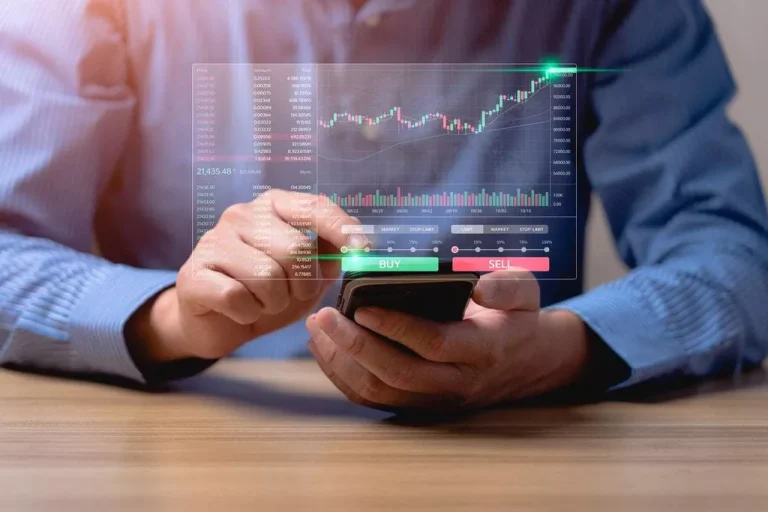What type of Forex trader are you? Test
Content
If you have a full-time job, this may not be the best trading style for you. The below is an example of a five-minute chart used by scalpers and day traders, showing typical day trading entry and exit points. These points are based on Relative Strength Index (RSI) signals, with the oversold and Digital wallet overbought areas circled on the chart. Their strategies usually revolve around 1-minute and 5-minute charts with very short trade duration. This approach is dynamic and suitable for adrenaline-seeking individuals.
Forex trader learning and practice
However, a trading strategy is regarded as a more targeted and distinct approach for spotting market trading opportunities using inputs to determine where one should intervene. Such preferences result from traders’ conditions depending on their financial resources, time availability, psychological makeup, risk attitude, and other factors. These styles are intended to act as guidelines for traders to address the multitude of challenges https://www.xcritical.com/ found in the forex market, and they do so by implementing the actions defined in the trading plan. The most important factor in creating your own forex trading strategy is to apply the trial and error method.

Do you like to make more trades or less trades?
After all, you do not really know yourself until you put yourself to the test. Take a look at our Forex Trading Courses — The PIP FISHER™ Level 1 & the PIP NETTER™ Level 2 courses will how to get trading terminal turn you from a complete beginner to a highly profitable forex trader in a matter of weeks. What’s important is that you find a time frame that fits your personality and schedule. Day traders make their chart analysis based on 15-minute candles, 1-hour candles, and sometimes even 4-hour candles. It’s a good middle ground as there aren’t many trades and the pace is manageable enough that you won’t need to act too quickly.
How much time can you dedicate to trading?
Instead, any individual trader can utilize a swing trading strategy by using a basic trading platform and trading tools. A forex trader is an individual or entity that trades currency pairs on the forex market. Exchange rates fluctuate for several reasons, be it supply and demand, economic events or announcements, geopolitical instabilities, and others.
For this reason alone, swing traders will want to follow more widely recognized G7 major pairs as they tend to be more liquid than emerging market and cross currencies. Dollar is preferred over the Australian dollar/Japanese yen for this reason. To trade forex without examining external factors like economic news or derivative indicators, you can use a forex trading strategy based on price action. This involves reading candlestick charts and using them to identify potential trading opportunities, based solely on price movements. Generally, this strategy should be used alongside another forex trading strategy like swing trading or day trading.

Once you have developed a strategy you can identify patterns in the markets, and test your strategies effectiveness. However, it is worth noting that there is no ‘best forex strategy’ and traders often merge strategies, or make use of strategy modifiers. This way, the forex trader is adaptable to many situations and can adapt their trading strategy to almost any forex market.
We’re one of the world leading retail forex providers7 – with a range of major, minor and exotic currency pairs for you to go long or short on. Forex trading, also known as foreign exchange or FX trading, is the conversion of one currency into another. FX is one of the most actively traded markets in the world, with individuals, companies and banks carrying out around $6.6 trillion worth of forex transactions every single day.
Individual currencies are referred to by a three-letter code set by the International Organization for Standardization (ISO). This uniform code makes everything from evaluating an individual currency to reviewing a foreign currency exchange rate easier. They generally prefer to use technical analysis, although they have to follow the calendar due to possible volatility spikes on a news event. Typical swing trading strategies use indicators like Bollinger bands, moving averages, Fibonacci retracement and others. Almost all kinds of trading activity revolve around technical analysis because of its diversity and different approaches to analyze demand and supply in the stock market.
- All of these means, having a trading lifestyle is very important to become a professional Forex trader.
- These guide traders as to when they should buy or sell depending on the specific price points or market conditions.
- If major economic news were to hit that day, it could affect your position.
- You are advised to perform an independent investigation of any transaction you intend to execute in order to ensure that transaction is suitable for you.
- Forex scalping focuses on accumulating these small but frequent profits as well as trying to limit any losses.
- By considering these factors and understanding your own trading style and personality traits, you can identify which type of forex trader you are.
- They rely on pre-programmed instructions to enter and exit trades based on specific criteria.
Traders will be watching closely, expecting any weakness to run out of steam and the market to turn back up and use this as a buy signal. The FX example in this chart highlights some of the buy and sell signals that came from the overbought/oversold strategy on a daily EUR/USD chart. Previously when the forex pair was up at that high, the sellers moved in and the price fell, suggesting the market had reached an overvalued level. If that old high is breached, also known as breaking resistance, then something has clearly changed. Traders are now happy to keep on buying where previously they thought the price was too expensive. When you’ve decided it’s time to close your position, just make the opposite trade or press close from the positions tab.
This type of Forex trading is typically preferred by supporters of the fundamental analysis who prefer to keep their trades for several months and even years. In order to make money with position trading you are forecasting future market events, which sometimes means that your prediction will go against the common sense beliefs at that time. The positions stay open for only a few minutes and sometimes even seconds.
Learn more information about major, minor and exotic forex currency pairs. By following a general strategy, you can help to define what type of trader you are. By defining factors such as when you like to trade and what indicators you like to trade on, you can start to develop a forex strategy.
As far as risk management is concerned, a forex trader will attempt to align their risk tolerance with their budget to safeguard their capital. Their trading plan will incorporate risk management rules like stop loss or take profit orders to mitigate the potential loss of funds. They will likely exercise caution as far as leverage is concerned as well as to avoid amplifying losses. Another risk a trader must be mindful of is the risk of liquidity, more specifically those currency pairs that may have limited liquidity, resulting in slippage or unfavorable trade execution. Trading psychology is a form of emotional risk that may lead to impulsive decisions and significant losses.
For example, you could have one trading account that’s just for long-term position trades, while also having another trading account for you to day trade or swing trade. Although scalping is highly profitable in a volatile market, inexperienced traders might run into trouble with the high speed of trading in the smaller time frames. Trading at such high speeds can be mentally & psychologically challenging and doesn’t leave traders much time for analysis or hesitation. Some people are position traders — in other words — they’ll enter a Forex position and hold it for a couple of weeks, months, or even years. They have a long-term view and do tend to trade based on looking at fundamentals; the underlying health of the economy, what’s happening to interest rates & GDP.